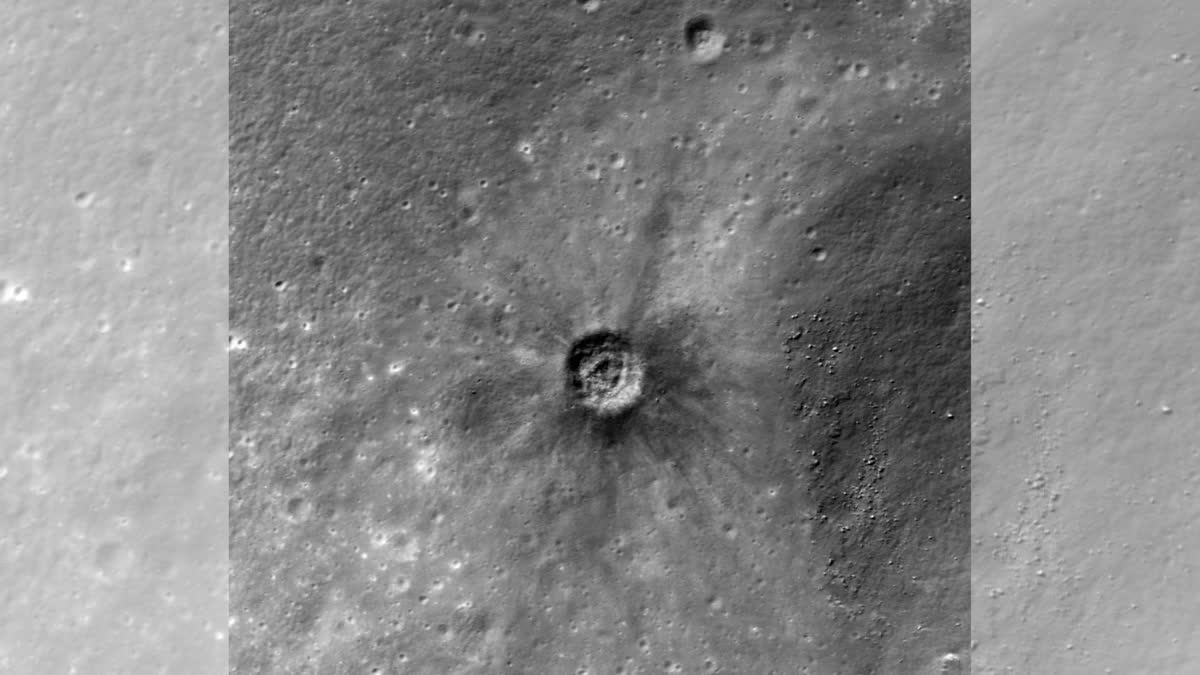Hyderabad: The Indian Space Research Organisation (ISRO) unveiled the eagerly awaited results of the Chandrayaan-3 lunar mission on Friday, however, the findings were kept behind a paywall irking netizens who questioned why should they pay to read about the recent achievement.
ISRO, on its official X handle, shared this exciting news about the results of Chandrayaan 3 being published. "On August 23, 2023, as it descended, the Chandrayaan-3 Lander Module generated a spectacular 'ejecta halo' of lunar material. Scientists from NRSC/ISRO estimate that about 2.06 tonnes of lunar epiregolith were ejected and displaced over an area of 108.4 m² around the landing site," ISRO posted, also sharing a link to the research paper published on October 26 on Springer Nature.
-
Chandrayaan-3 Results:
— ISRO (@isro) October 27, 2023 " class="align-text-top noRightClick twitterSection" data="
On August 23, 2023, as it descended, the Chandrayaan-3 Lander Module generated a spectacular 'ejecta halo' of lunar material.
Scientists from NRSC/ISRO estimate that about 2.06 tonnes of lunar epiregolith were ejected and displaced over an area of 108.4 m²…
">Chandrayaan-3 Results:
— ISRO (@isro) October 27, 2023
On August 23, 2023, as it descended, the Chandrayaan-3 Lander Module generated a spectacular 'ejecta halo' of lunar material.
Scientists from NRSC/ISRO estimate that about 2.06 tonnes of lunar epiregolith were ejected and displaced over an area of 108.4 m²…Chandrayaan-3 Results:
— ISRO (@isro) October 27, 2023
On August 23, 2023, as it descended, the Chandrayaan-3 Lander Module generated a spectacular 'ejecta halo' of lunar material.
Scientists from NRSC/ISRO estimate that about 2.06 tonnes of lunar epiregolith were ejected and displaced over an area of 108.4 m²…
As soon as one opens the link, the website allows a user to read the abstract but charges money to download the entire research paper. This irked an X handle @gareebscientist .
-
Please open access this. Having a paywall benefits only the publisher here pic.twitter.com/YtidFG0726
— Gareeb Scientist (@gareebscientist) October 27, 2023 " class="align-text-top noRightClick twitterSection" data="
">Please open access this. Having a paywall benefits only the publisher here pic.twitter.com/YtidFG0726
— Gareeb Scientist (@gareebscientist) October 27, 2023Please open access this. Having a paywall benefits only the publisher here pic.twitter.com/YtidFG0726
— Gareeb Scientist (@gareebscientist) October 27, 2023
"Please open access this. Having a paywall benefits only the publisher here (sic)," the user commented, stating that he/she wanted to explore the results mentioned by the ISRO on X.
Springer currently charges 39.95 euros (approx. Rs 3500) for any user to access the complete research. While ISRO does not have any say in it, the fact that the research was not fully accessible left many disheartened.
"Most of the scientific papers are freely accessible to academics through institutional credentials. Unfortunately, technical papers aren’t fully public. I can send you the copy of it once I get to download it," one user replied to 'GareebScientist'.
Another one asked him/her to directly mail the publishers for the research. "If you buy, the money goes to Springer not ISRO. They essentially charge money for peer reviewing the article," another user wrote.
The Chandrayaan-3 mission has been hailed for the successful descent of the Lander Module at 6.03 pm on the moon's surface on Aug 23, 2023.
The ISRO's post said the mission generated a remarkable 'ejecta halo' of lunar material, estimated at approximately 2.06 tonnes of lunar epiregolith spread over an area of 108.4 square meters around the landing site. This groundbreaking research was published in the "Characterisation of Ejecta Halo on the Lunar Surface Around Chandrayaan-3 Vikram Lander Using OHRC Imagery" article in the Journal of the National Remote Sensing Centre(NRSC).
The debate has opened a larger conversation about the accessibility and dissemination of scientific research. While publishers often rely on subscription models and paywalls to sustain their operations, the question of whether scientific research funded by public resources should be available to the public for free has gained momentum.
The ISRO is yet to respond to this user's concern, leaving many eager to see how the space agency will address the issue.
Also read-



